7 Sustainable Interior Design Trends
7 Sustainable Interior Design Trends
Each year, eco-friendly interior design has become increasingly popular as one of the top trends in home decor. From sustainable building materials to furniture made of reclaimed and natural materials like recycled glass and wood, eco-friendly living has taken the front seat.
According to the EPA, approximately 89% of all waste in the U.S. is recyclable, but we only recycle about 34% of it. The excess in waste hurts our environment, creating more pollution as that waste eventually disintegrates into gasses that contribute to the greenhouse effect. Or worse, our waste ends up in the ocean causing considerable harm to the ocean’s ecology.
To reduce the amount of waste we produce and help protect the environment, sustainability has become a major interior design trend. But more than the ecological benefits, sustainability can also offer big cost savings in reusing materials and reducing energy consumption.
If you’re looking to incorporate more sustainability into your interior design this year, here are the hottest interior design trends that also happen to be eco-friendly.
1. Recycled Glassware
Glassware isn’t usually associated with interior design. But considering that your glassware decorates your table, countertops, or end tables, it’s a piece of your design you should think about.
In using recycled glassware like vintage mason jars, sea glass tumblers, or champagne glasses made from recycled plastic, your glassware will be supplied from eco-friendly sources. However, if you want to buy new glassware for your home, recycled glass bottles and jars can still make for fun decorating items. These recycled pieces reduce the amount of waste that occupies our landfills, helping to improve the environment.

2. Woven, Natural Textures
Texture is a big piece of any interior design. The more you can use natural decorations like woven straw baskets, wool blankets, or bamboo decorations, the more sustainable resources you have in your design. For example, wicker placemats, art, and woven shades can make for great natural textures in your home. And in the case of natural woven shades, they can also help retain your home’s climate or temperature, reducing your energy consumption.
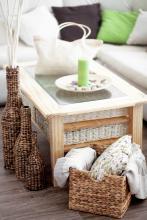
3. Natural Fiber Area Rugs
Anytime the word “natural” is in the product name, you can feel confident in the fact that it is made from renewable and sustainable sources. This is certainly true for natural fiber area rugs. Made from natural grasses or fibers like sisal, wool, jute, hemp, and others, natural fiber rugs are 100% sustainable. In addition, the insulation they provide your floors can reduce your energy bills by helping keep your home retain its temperature.
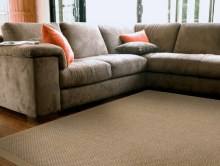
4. Repurposed Furniture and Decor
Today’s landfills are overflowing with trash, furniture, and other waste. As you move from home to home, it’s easy to just throw out the old and purchase the new. However, the amount of waste that’s produced as a result can quickly pile up. Avoid the temptation and instead repurpose your furniture and decor.
If you feel as though your current furniture doesn’t fit your aesthetic or design, reupholster your furniture to fit your new home. Still feel like it’s not working? Donate your old furniture to charity and pick up some new pieces from a refurbished or used furniture store. You can discover some amazing vintage furniture in those stores that can become an easy statement piece.
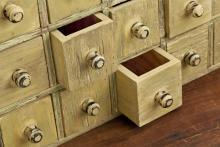
5. Natural Paints
Manufactured paint can be heavily processed, generating plenty of energy and releasing strong fumes. While this allows the paint to settle evenly, strengthen, and give off a bright hue, there are natural options that are a great alternative. Natural or organic paint, as the name implies, is a more environmentally friendly option than manufactured paint as it gives off zero emissions. This can also help reduce the number of allergens in the air, a helpful quality for asthma and allergy sufferers.
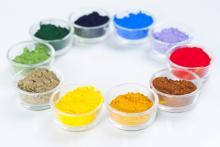
6. Recycled Tile
In the spirit of re-use and reducing waste, your home’s flooring can also come from recycled sources. While reclaimed wood floors are the more popular option, recycled tile is a great flooring choice for your bathrooms, kitchen, and other areas of your home that require a surface that’s a little more durable than hardwood. Recycled tile is an eco-friendly flooring choice that looks great in your home and allows you to feel confident in your carbon footprint (or lack thereof).
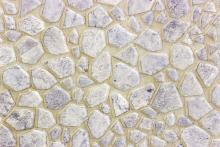
7. Biophilic Design
Biophilic design is a creative approach that brings the outdoors in, building a deeper connection between nature and our living spaces. It’s rooted in the idea that integrating natural elements into interior design can improve well-being, reduce stress, and enhance creativity and clarity. By incorporating features such as indoor plants, natural lighting, ventilation, and materials that mimic the textures and colors of nature, biophilic design seeks to blur the boundaries between the built and natural environments.
Sustain Your Home with More Design Trends
When incorporating sustainability into your next interior design project, pay special attention to the waste you’re saving in the process by focusing on renewable resources or recycled materials. Looking for more great design ideas? Check out these design posts:
